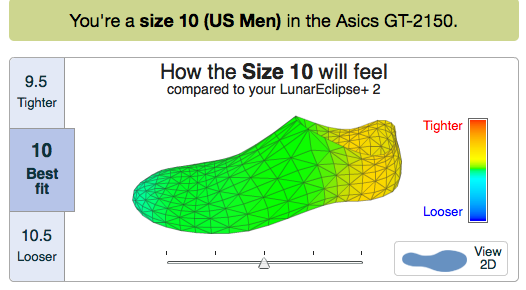Not that long ago, I bought a pair of pants at the Gap. They were a 35 waist. I didn’t even try them on, since I’ve owned about 10 pairs of Gap pants over the years and I’ve always bought a 35 waist (well, since I quit smoking, when I gained 25 pounds). In fact, I was wearing a pair of Gap pants with a 35 waist when I made the purchase. But when I got home, the new pants didn’t fit. Too small. This threw me into a rage that was likely somewhat disproportionate with the offense.
My wife had no sympathy, since she always tries everything on (she’s very practical that way), but come on! It’s the same store with the same sizing, why wouldn’t they fit? It’s maddening.
What’s worse is that I still haven’t returned the pants. I can’t be bothered. I go shopping about once a year and there’s no way I’m going to waste my time going back to the Gap, waiting in line, producing a receipt (I’m sure I’ve lost this by now anyway), and then getting my $15 back (okay, it was the Gap outlet and the pants were cheap. Yes, there’s a possibility that’s why they didn’t fit. Nevermind. That’s not the point of this story).
You’ve likely had the same experience. Well, likely you manage your money better and are more practical than I am, but surely you’ve made the mistake of thinking that a size x in one brand is a size x in another brand. It’s partly why shopping for clothes online hasn’t taken off as much as it should have by now: You can’t be sure that the clothes will actually fit!
Well, that’s a problem 3D scanning can solve. In fact, Shoefitr is already solving this problem with laser scanning. See, the company has basically taken every shoe on the face of the earth (apparently. It’s hard to say what percentage of the earth’s shoes they’ve scanned, exactly), scanned them, and then used that information to compare your favorite shoe to the shoe you’re thinking of buying.
“Oh, you wear a size 9 in the Nike Air Max One Million Seventy Nine Special Edition XXX? Well, then you’re going to want to go with a size 9.5 in the ASICS Aweomeness Squared Super Fast Running Shark. And it will feel a little tight in the heel.”
I’m not sure exactly what software solution they’re rocking, but they’ve somehow created a database that quickly takes the scan-created model of one shoe and and merges it with the scan-created model of the other shoe and does basic clash detection. Pretty cool, if you ask me.
What it shows you looks like this:
They’ve got a good business model, too. Basically, they sell the service to all the online shoe retailers and then, as you go to select your shoe, it offers you the option to compare and contrast. Once they’re on one retailer’s site, how can the other retailers not purchase their service? It’s brilliant. And it’s not hard to see how the reduction in returns created by bad fits creates ROI in about five minutes.
There is obviously a larger question about why the shoe manufacturers can’t get their friggin’ acts together and make sure that a size 10 is a size 10 is a size 10, but that’s another matter entirely. For the moment, laser scanning has solved your problem. Why would you ever go to the store again, only to be told, “oh, sorry, we don’t have your size”?
I think the retailer’s only hope is to buy laser scanners of their own because the missing piece here is the scanning of your actual feet. Maybe one foot is wider or longer than the other and your really need different sizes for each foot. The retailer could scan your foot, feed it immediately into customized software for that purpose, and quickly deliver the shoe brands and sizes that would most ideally fit.
That would get me out to the store.
I guess scanning pairs of pants is a little more difficult, but Target has already spent a million bucks on an in-store scanner in Australia to start to fix the clothes-sizing problem. And they’re to be commended for that. Now, the badly named Styku (I guess it’s a play on “style” or something, but I can’t read it any way other than “stick you,” and I don’t want to be stuck) has created a virtual fitting room employing Kinect technology. If that’s not in a majority of medium-end clothing stores soon, I’d be surprised (the high-end guys will go with the tape-measure dude for a while yet – he’s classy).
So, you go in, get scanned, and then you can either “virtually try on” various outfits, or get recommendations as to what clothes are most likely to fit best, or look best, when you’re wearing them.
Maybe the best video demonstration of this was made by Cisco. It’s not “real,” but it does a nice job of demonstrating the possibilities and where we’re headed:
But hurry up. I’m planning on shopping again in about six months and I don’t want this bad-fitting pants thing to happen ever again.






